The growth of the co-operative movement
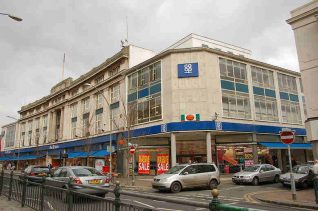
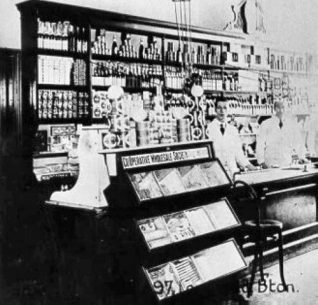
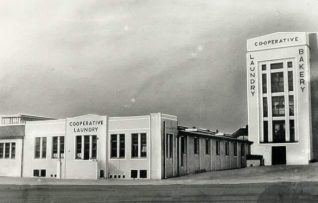
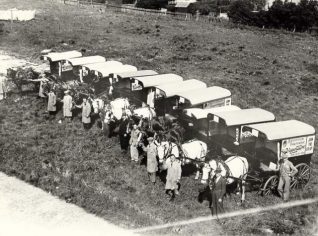
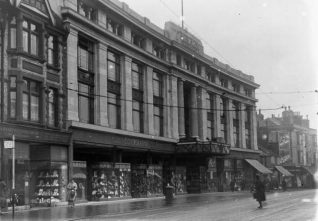
Please note that this text is an extract from a reference work written in 1990. As a result, some of the content may not reflect recent research, changes and events.
a) EARLY SOCIETIES: The Brighton Co-operative Benevolent Fund Association, based on the communal ideas of social pioneer Robert Owen, was formed on 1 January 1828 and opened a shop at 31 West Street, the first co-operative retail shop in the country. Among its supporters were Lady Byron, and also Dr William King who wrote articles for a monthly journal, The Co-operator, of which twenty-eight issues were published from May 1828 until August 1830; they were one of the inspirations for the Rochdale pioneers. The society’s store later moved to 37 West Street and then to Upper North Street. The Sussex General Co-operative Trading Association, formed at about the same time, operated a store at 10 Queen’s Place, but both these early ventures had ceased trading by 1830.
In 1846 the Sussex Joint Stock Co-operative Friendly Society was founded by trade union pioneer George Henderson with a store at 100 Trafalgar Street which continued trading until 1857. It was followed by the Working Men’s Co-operative Industrial Society in 1860 with a shop in London Street.
b) BRIGHTON CO-OPERATIVE SOCIETY: The Brighton ‘Co-op’ was founded at a meeting at the Coffee Palace, 29 Duke Street, on 26 November 1887. With George Holyoake as president, the society was formally established on 1 January 1888 with 200 members, and the first store was opened at 32 North Road on 16 May 1888. Membership increased slowly with only 932 members by 1900, but by 1914 it had risen to 4,414 and after the war increased rapidly to 10,000 by 1921 when other Sussex societies had been absorbed. In 1900, 96 London Road was purchased as a main office, and nos.97-101 were also acquired by 1909. These premises were converted into a single store in about 1919 when the Lewes Road store was also enlarged and branches had opened in several Sussex towns.
The 1920s and ’30s saw a large expansion in operations, and the ‘Co-op’ played a very important part in the lives of many of the poorer inhabitants of the town, organising social and sporting events as well as providing dividends for its members and value-for-money shopping. Many new shops were opened across the county and a new bakery was established in 1920 at Portland Road, Hove, which was joined by a large laundry in 1934; the dairy operation was also expanded greatly behind Hanover Place. The culmination of the society’s early success was the opening of the large central store in London Road on 12 September 1931, now the largest department store in Brighton. Designed by Bethell and Swannell, it has four storeys and a 180-foot frontage relieved only by two giant fluted Doric columns above the entrance. The total floor area now amounts to some 70,000 square feet with the additions of 1962, 1975 and 1980.
In 1978 the first large Brighton Co-op ‘superstore’ was opened at Peacehaven; a second opened on 11 June 1986 in Nevill Road, Hove, and there are others at Worthing and Hailsham.
Any numerical cross-references in the text above refer to resources in the Sources and Bibliography section of the Encyclopaedia of Brighton by Tim Carder.
The following resource(s) is quoted as a general source for the information above: {74,75,123}




Comments about this page
There was a Co-op shop on Ditchling Road near the junction with Preston Drove. My grandmother bought just about everything she could including coal from the Co-op. I think they had some sort of coupon system which could be given in for goods. They certainly were a shop for people on a tight budget. The Co-op had a Christmas Club which allowed customers to save a little each week. Our Christmas’s would have not been so special without the Co-op.
When I was a kid in the 40s and 50s our local Co-op was in Whitehawk Road on the corner of Henley Road. I can still remember my Mum’s divi number which was drilled into us as kids. I was always fascinated by the wires overhead which carried the little cannisters from the counters to the cashiers desk and back again with change and a receipt. The Co-op had a milk depot as well on the same premises. Every Saturday the Co-op milkman came round to the house to collect the money for the weeks milk. He wore a cap with half a dozen pencils sticking out of it.
As a very young child I remember my mum and dad taking me to the Co-op in London Road at Christmas. It was so lovely seeing Father Christmas. I knew he was a fake because about a hour later he was on the next floor selling shirts and ties .
Yes, was good old days at Whitehawk. Co-op tea in red packets, butter patted with a pattern on it. The baker with the bread van pulled by the old horse that knew all the houses to go to. Every year my mother would order a birthday cake from the baker, pink for my sister blue or yellow for the boys. My sister worked for some time at London Road, in the office. Her name was Peggy.
Can anybody remember the Co-op that used to be on the junction of Bristol Road and St. Georges Road, at the end of St. Georges Terrace. It was called the Kingscliffe Branch.
I used to go there when I was a child in the 1950s. I used to do my Grandmother’s shopping and I can still remember my Grandmother’s Dividend number.
I worked in the London Road branch when I first left school in 1990, but was sadly made redundant after about two years. I then re-joined the Co-op a few years later again working in London Road. I then left and was very very sad when I heard about the closure as I had made many friends and did go to the shop a few days before it closed just to have one last look around and say goodbye to the peolpe I knew. I am back working for the Co-op again and have been for just over a year.
I remember several of the stores mentioned above – and have similar memories. Is anyone compiling a history of the people involved? We come from a long line of cooperators from the very early days (pre-World War II – through to the 1970s). Members of Co-op Youth, Woodcraft Folk etc. My father worked for the Cooperative Insurance Society and was the President of their Trade Union. My grandmother and my mother were both members of the Board at the London Road store – I’d love to hear from anyone who is interested.
My Great Grandmother, Elizabeth Steer was supposed, according to family folklore, to have been involved with the Brighton Co-op in the early years of the 20th Century. Certainly she was instrumental in one of my Uncles working in the Haywards Heath Co-op before World War 2. He was, briefly, manager of the Littlehampton Branch, until called up in 1940. After the war he went into the Co-op Insurance, in the Lancing area. One of his brothers also worked in Co-op Insurance. Their name was Heavens.
Is there an archive where I can look all this up?
My grandfather, Harry Charles Kille, served on the committee of the Brighton Co-operative Society from 1893 to 1914 and was chairman for several years. He opened the first Portslade co-op shop with a ceremonial key which I loaned indefinitely to the society. I hope they haven’t lost it!
My Dad used to deliver milk (after collecting it from local farmers) to the milk depot in Elm Grove. Is there anyone who has any photos as I am interested in any information.
I worked as a manager for the East Grinstead store and remember travelling to cover stores in Tonbridge, Tonbridge Wells etc….sad times when they all shut.
I worked for the Co-op London Road store in the Menswear dept from leaveing school until I was called for national service in the RAF five years later. Those were wonderful years and I made a lot of friends 1954 to 1959.
The Brighton Co-op really was a happy place to work, I worked there in the shoe department under a Mr Moody years 1948 to 1953. We sold shoes by the hundreds on a Saturday and had branches all round Sussex. My brother also worked there as a french polisher, everything sold there in the furniture dept was inspected and touched up to insure the highest standard. We also had a football team there and played on Thursday half days. They were happy days there and in the shoe department - all wonderful.
I did my apprenticeship at the Co-op works dept based at the bottom of Ditchling Rise by the cafe. Some of you out there might be related to the craftsmen I worked with as some of them had wives working at central branch in London Road, our manager was Charlie Remington who lived off Elm Grove,the foreman was Bill Green from Blatchington Road who had twin daughters. The carpenters were Reg Dancy from Hollingbury, Les Coppard of Portland Road, (who commited suicide because of health problems), Frank Cambell who was like a dad to me, his wife Ruby worked in central branch, Fred Bowden of Portslade, Bert Finch a painter and George Johnson a plumber who was an ex navy man and a real funny character. During my four years there I worked at a lot of branches doing various repairs- at Polegate, Worthing, Eastbourne, Hove and many more that I can’t remember but I do remember learning a lot from these guys because they were old school and did things properly and taught me to be a first class carpenter and joiner.
Hi all, I did my apprenticeship at the Co-op Transport department in Portland Road between 1973-1977 with people like George Arnold, Charlie Styles, Kenneth (Jim) Kelley, Tony Froude, David Ullah and Ron Stunell. In charge were Benjamin (Sam) Weare and Ted Dunn. Transport Manager was Ernie Rogers. I then transferred to the Central Dairy workshops and worked there with Jack Oakey.
I left Fawcett in 1961 and worked in a shoe dept in the stock room in the basement. I remember Norman Gosling who was in mens outfitters. Paddy on the dispatch bay at the rear, Kathleen Sifleet in ladies wear I think. The good old days! If any of you remember please get in touch email philip.gray53@ntl world.com It would be nice to go back a few years.
Does anyone remember in the 60s that there used to be a ‘Digital Clock’ above the entrance to the Co-op in London Road? My Mum used to work at Curtess shoe shop opposite the bottom of Baker Street and I sometimes used to go for my lunch there from school. I used to pop in to Acres the Bakers in Baker Street for a pastie and I used to keep an eye on that clock so I wouldn’t miss my bus back to school. I’ve been along there and I cannot find any evidence of where it was on the building. Did it have a history at all? My friends and I used to marvel at it because for the time it was quite futuristic. Does anyone know how long it was there?
I now live in NZ and have just come across my passbook. Apparently my balance was £1 in January 1968. Does that mean I’m still a shareholder?
Just to keep this page updated, I was in London Rd on Thursday and the Co-op is swathed in scaffolding; the entire building behind the facade is being removed from what I could see. The site [plus the 1930 frontage] is to be student accommodation which should have two effects; it may lessen the impact of student lets on residential neighbourhoods [studentification] and it will certainly bring some much needed income into poor depressed London Rd.
My grandfather, baker and confectioner Frederick Levi John Parsons, who lived in Shoreham, worked at the Co-op Bakery in Portland Road, Portslade, Hove, prior to 1960. I would be most grateful if anyone else working there, who perhaps remembers him or has photos of people or the workplace, could get in touch with me for an exchange of information.
My father, Charles Start, worked in the Work’s Dept. of Brighton Co-op from when he was demobbed from the army in 1946/7. He had trained as a bricklayer and had taken on additional training whilst in the army, working on larger-scale projects, including bridge building. He was general foreman when the Co-op reconstructed and refurbished the large Co-op Corner store at Eastbourne in the late 1940’s. At the beginning of the ’50s the Co-op decided to rebuild and enlarge their old dairy that stood at the bottom of Islingword Road, Brighton and Dad was appointed General Foreman for the project. The plan was to eventually demolish the old dairy, but keep it working whilst the new dairy was being constructed – something of a building challenge. A huge basement area for plant was excavated and the operational area for the dairy was built on the two floors above. It was a big project for the time and included many new techniques, including the huge ferro-concrete domed roof that spanned the whole site. I still have my Dad’s day-books that chronicle the daily progress of the project, as well as some of the site drawings. The new dairy came in on time and was producing milk for the wide Brighton Co-op customer area. We lived in Patcham village and it was not uncommon to see huge tankers on the London Road bringing milk collected from Sussex farms for processing at the new dairy. Dad was very proud of the project, as were the directors and members of the organization, and he was presented with a handsome (for the time!) cheque for his management of the construction. Whilst Mr. Leggat, the CWS architect who designed the the dairy, tried to persuade my father to branch out into even more ambitious forms of work (the two had worked very closely during the construction and had great respect for each others skills and abilities) but he decided to stay with the Co-op. He worked on projects across Sussex at all of the firm’s sites until he retired in the 1970s.
Hi Edward Start, I worked with your dad Charlie doing repairs at the bakery and the laundry in Portland road in the ’60s. He was in charge and he was a real comical bloke to be around, plus he always made the tea for us all. I was an apprentice carpenter at the time.
My father was manager of the Southwick Co-op store on The Green before the Second World War. As a child I would sometimes go to the shop after it closed for the day and my treat was to be allowed up to the cashier’s central cubicle on a plinth in the centre of the store and fire all the cash capsules to the various counters. Although my father was exempt from military service as a food retailer he volunteered and was away for six years returning to the Co-op in 1946. His shop was selected to be the experiment in self service grocery retailing and I can remember the surprise at seeing all the tins and packets on rows of shelves for shoppers to pick their own.
My mother started working for the Co-Op when she left school at the age of 14 (about 1942). She initially worked in the dairy at the bottom of Islingword Road, but was placed with half a dozen much older women, and didn’t enjoy it. She transferred to the cashier’s office in London Road (top floor). At 16 she became a cashier, working at the ends of the vacuum pipes that brought money from the shop floors. She occasionally took a turn in the basement, which used the overhead wire system (maybe there was not enough ‘suck’ from there to the top floor!). During a bombing raid, she was trapped in the basement on her own for quite a while, but was unscathed. She had to leave when she got married in 1949. I remember, as a child, her taking me to meet her former colleagues, actually in the cashiers’ office.
When I was about 15 my mum took us to the Co-op on London Road and I choose a lime green pant suit. I am now 62 and to this day I still remember thinking how cool I looked in it. I wish I still had it. All I have is a black and white photo of me wearing it.
I worked at London Road COOP from 1963-1967 it was not a great firm to work for , but they were a lovely crowd to work with . And also they had a sports club with a lot of social activities going on.
Add a comment about this page